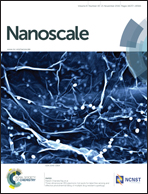Investigating the all-solid-state batteries based on lithium garnets and a high potential cathode – LiMn1.5Ni0.5O4†
Abstract
All-solid-state Li-ion batteries based on lithium garnets give new prospects for safer battery operations avoiding liquids, and could enable the integration of high energy density electrode materials. Herein, we critically investigate the structural and chemical stability of the high voltage cathode material, LiMn1.5Ni0.5O4, based on the solid lithium garnet electrolyte LLZO (c-Li6.4Ga0.2La3Zr2O12) for all-solid Li-ion batteries. We manufacture battery cells based on nano-grained synthesized LLZO and composite cathodes (LiMn1.5Ni0.5O4/LLZO/C) fabricated via direct slurry casting of the cathode material and additives on sintered LLZO pellets against metallic Li anodes. The galvanostatic tests of such all-solid-state batteries up to 4.9 V at 95 °C reveal the incompatibility of the solid electrolyte and the cathode material under given conditions. Post-mortem analyses of the all-solid-state batteries demonstrate the formation of new inactive phases at the LLZO/LiMn1.5Ni0.5O4 interfacial region through an irreversible reaction starting at ∼3.8 V during charging. The discovered limited chemical stability under the investigated conditions raises the question if LLZO could be a promising solid-electrolyte for future all-solid-state Li-ion batteries especially at higher operation potentials and demanding operation conditions.


 Please wait while we load your content...
Please wait while we load your content...